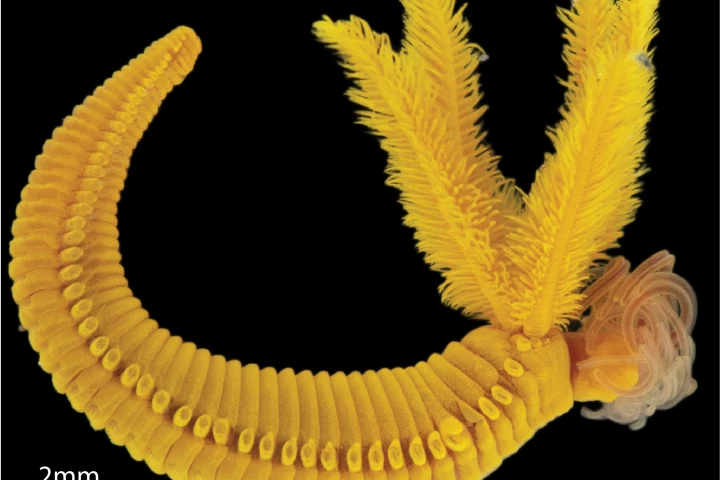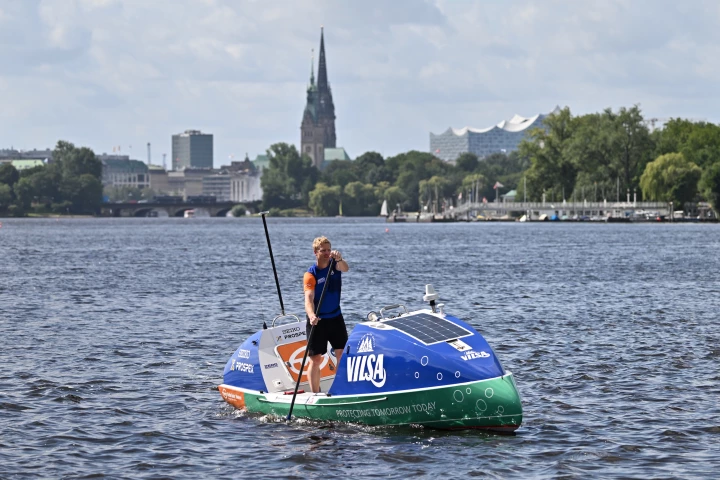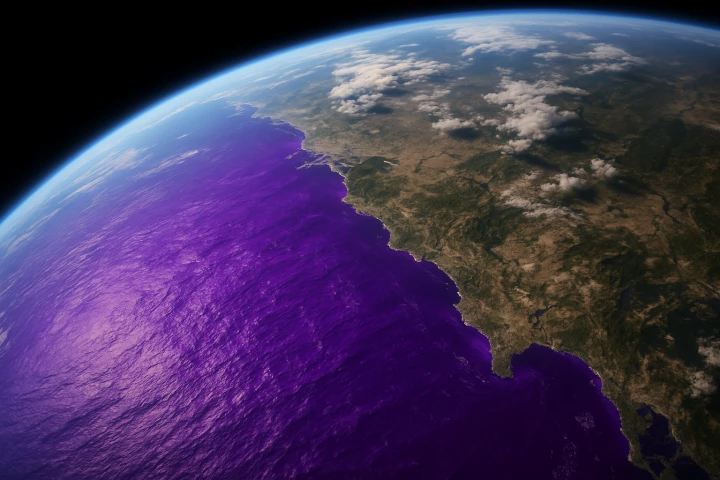Ocean
-
A team of Australian bodyboarding ratbags has managed to capture staggering footage of an extraordinary oceanic phenomenon: a place where four 12-ft (3.7-m) waves regularly converge into an oval dip, with explosive results.
-
At the bottom of the ocean, where metal-rich hydrothermal vents exhale poison, a bright yellow worm has mastered an impossible art: turning lethal elements into armor. Meet Paralvinella hessleri, the deep-sea super-worm that turns arsenic into crystal.
-
Nitrogen fixation is a process where certain microbes convert nitrogen gas into ammonium, a form phytoplankton can use. This wasn't thought to happen in the Arctic, but new evidence suggests it might, offering a fresh supply of nitrogen to fuel life.
-
Oceanic manta rays make extreme dives of more than 1,200 meters – three-quarters of a mile – but it's not to feed. Instead, the mantas are calibrating their own kind of Google Maps as soon as they find themselves out beyond the continental shelf.
-
Scientists in China have devised a way to capture carbon dioxide stored in seawater, and convert it into biodegradable plastic precursors. This approach could reduce the acidification effect of CO2 emissions in marine ecosystems, with an added bonus.
-
Later this month, German water sports enthusiast and environmental activist Michael Walther will attempt to cross the Atlantic Ocean on an SUP. If he succeeds, he will be only the second person to ever do so.
-
Dozens of water-harvesting pods are set to be deployed along the sea floor off the coast of California as the United States ramps up its first subsea desalination project. The effort is expected to produce 60 million gallons (227 million liters) of fresh water per day.
-
Scientists have discovered 230 new giant viruses (girus) found to be the unseen engineers of marine ecology, impacting global carbon cycling and energy flow across the world’s oceans.
-
The oceans are losing their light – and with it, possibly their life. A new study reveals more than 20% of the Earth's ocean, an area larger than Asia, has darkened over the last two decades.
-
China is going full Jules Verne as it prepares to go where no drill has gone before. As part of its Deep Ocean Drilling Program, the special-built Meng Xiang (梦想号, "Dream") drill ship is gearing up for a multi-year effort to pierce the Earth's crust.
-
For ages, Earth has been known as a blue planet, a vision largely shaped by the vast oceans that cover three-quarters of its surface. But what if this wasn't always the case, and our oceans used to be green?
-
Literally a century after it was first discovered, we now have footage of the colossal squid alive in its natural habit for the very first time for your viewing pleasure. In fact, you can see a juvenile transparent specimen here.
Load More











